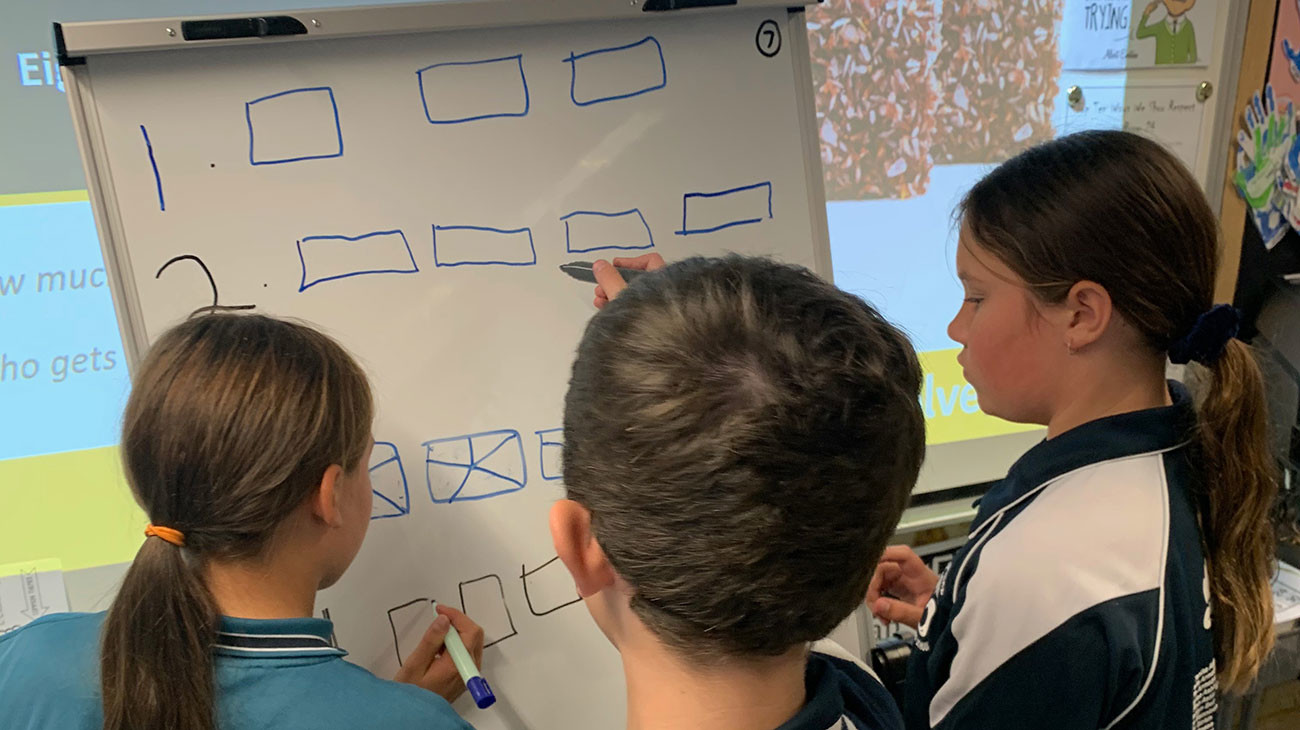Posted Thursday, 4 April 2024
Scitech’s DIY Kits bring hands-on science experiences into the classroom
We have been complementing science classroom teaching through our DIY Kits for more than 15 years.
Solving problems in random groups has helped Leanne Northey’s students learn respect so that everyone can ‘have a go’.

Hello! My name is Leanne Northey and I am a year 6 teacher at Ocean Road Primary School in Dawesville and this year I am participating in the Alcoa Champions of Maths program.
I first heard about the program when I attended a seminar where Shyam was presenting and it sounded really interesting and something that I thought would help me be a better Maths teacher. Maths was something that I did not enjoy at school. I didn’t ‘get it’ straight away or understand the relevance. At high school I couldn’t see the significance of some concepts (algebra?!) and would find myself thinking “when am I ever going to need this?” I was totally disengaged from Maths, just going through the motions to get it done, but not really understanding what I was doing.
After becoming a teacher, I wanted to make maths engaging and allow students to make connections between the maths that they were learning to the world around them. I didn’t want Maths to be something that they hated, but something they looked forward to. I read lots, attended workshops and PD’s and learnt from others. Maths was no longer something that I dreaded, but something I found fascinating and I wanted to share this with my students. I was looking for different ways to teach Maths and accommodate different learning styles, something that wasn’t even considered when I was at school. I still wanted to improve my teaching practices and jumped at the chance to participate in the Champions of Maths program when it was offered to my school.
The program centred around designing and delivering maths lessons that focused on problem solving and reasoning. Some of the core beliefs of the program is creating a class culture based around the idea that learning is a combined responsibility and Maths is a ‘shared knowledge that is constructed together”, not knowledge that belongs to a special few. That discussing and contributing ideas improves confidence, knowledge and deepens understanding.
Our second workshop explored the problem-solving lesson structure that we were going to follow – choosing mathematically rich tasks, using non-permanent vertical services, putting the class into visible random groups and engaging in discussion at the end of the lesson. I had some doubts and concerns about the visible random grouping of students. My class was pretty ‘challenging’, and I wasn’t sure how the random grouping would work. In my class there are some strong characters and personality clashes and a huge range in mathematical abilities. I was apprehensive about how some students would work together, how cooperative they would be and when left on their own, how productive they would be and how much learning would take place. They had worked in groups before, but there were reasons and thought behind the groupings, usually either ability based or behaviour. If they had been allowed to choose their own partners for tasks, it often didn’t work that well! Shyam advised that building a positive learning environment would take time but assured me that after working together for the year, and lots of exposure to this environment, they would be successful. I had to believe in the success of the program.
Before my first problem-solving lesson with my class, we spent some time discussing what working in a group looked like, sounded like and felt like. We created expectations and established some group norms such as listening to others, everyone having a say and no put-downs. We also discussed how to engage in respectful conversations with each other in order to further our understanding. To help with our group conversations and whole class discussions, sentence starters were placed around the room to assist.
During the first problem solving lesson, there were a few giggles, gasps and groans when the random groups were projected on the Interactive Whiteboard. I held my breath and sent them off to work on the task! I walked around, monitored and questioned. There were a few students who were off task, but I was pleased with how well they worked together.
As we have progressed through the program, the random groupings and small group work have become common practice and is working well. My students are now excited to see who they are going to be working with. We are still working on how to get equal contribution from all members of the groups and how to question their peers, but there has been lots of positives. I have noticed that even the most shy, quiet and least confident students contribute and have a voice. Every student picks up a whiteboard marker and ‘has a go’, regardless of their own ability and whether it is correct or not. The more ‘vocal’ and dominant students often take a step back and allow others to contribute. Even though we are only in the very early stages of the program, I can see benefits to ALL students already and I’m excited to see what happens during the rest of the year.
Find out more about the Alcoa Maths Enrichment Program or read the next article.
Would you like to continue a discussion on this topic with other educators? Join our Facebook group!
If you are interested in joining the Alcoa Maths Enrichment Program please fill out the enquiry form below and a Scitech representative will be in touch with you.
Upon clicking the "Book Now" or "Buy Gift Card" buttons a new window will open prompting contact information and payment details.